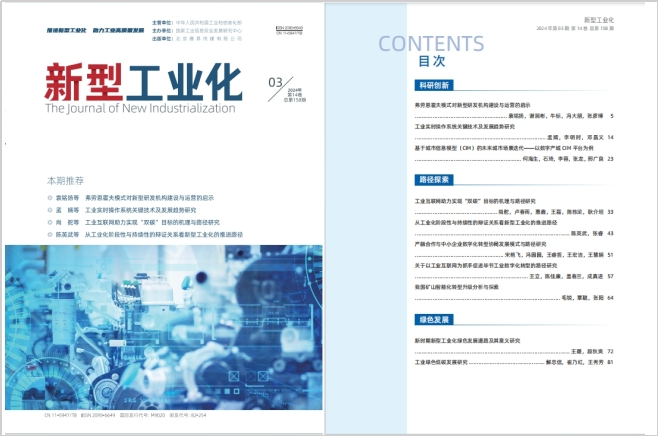
The article titled “Mechanisms and Pathways of Industrial Internet in Achieving Carbon Neutrality Goals” authored by Shang Duo, Lu Chunyu, Hui Xin, Wang Lei, Chen Dongliang, and Geng Jietan, was published in the 3rd issue of 2024 of the journal “New Industrialization”. The full text is shared as follows:
Mechanisms and Pathways of Industrial Internet in Achieving Carbon Neutrality Goals
Striving to achieve carbon peak before 2030 and carbon neutrality before 2060 is an inherent requirement for implementing new development concepts, constructing a new development pattern, and promoting high-quality development. It is a significant strategic decision made by the Party Central Committee to coordinate domestic and international situations, a necessary choice to address prominent resource and environmental constraints, and to achieve sustainable development for the Chinese nation. Achieving the “dual carbon” goals is a long and arduous task that requires a complete, accurate, and comprehensive implementation of the new development concept, ensuring that the decisions and deployments of the Party Central Committee are put into practice. Promoting the realization of the “dual carbon” goals is not only an urgent need to solve prominent resource and environmental constraints and achieve sustainable development but also a pressing need to adapt to technological progress and promote the transformation and upgrading of the economic structure. Currently, over 130 countries worldwide have committed to achieving carbon neutrality by the middle of the 21st century.
With the deep integration and innovative application of digital technology in the fields of resources, energy, and the environment, the role of digital technology in achieving carbon neutrality goals is increasingly gaining attention. The Industrial Internet is a new type of infrastructure, application model, and industrial ecosystem that deeply integrates new generation information and communication technology with the industrial economy. By comprehensively connecting people, machines, materials, and systems, it constructs a new manufacturing and service system covering the entire industrial chain and value chain, providing a pathway for the digital, networked, and intelligent development of industry and even the entire sector. It is an important cornerstone of the Fourth Industrial Revolution. With the continuous development of the Industrial Internet, its roles in cost reduction, efficiency enhancement, quality improvement, and greening are continuously being released. The Industrial Internet plays a significant role in the digital monitoring and precise measurement of carbon emissions, carbon footprints, and carbon sinks, digital energy-saving and efficiency enhancement, and improving energy utilization efficiency, thereby directly or indirectly reducing carbon emissions. Driven by the demand for “dual carbon” goals, the Industrial Internet technology can not only promote the digital and green transformation of industry to form a new industrialization system but also further drive energy, transportation, construction, and other industries outside manufacturing to save energy and reduce consumption, facilitating the achievement of China’s carbon peak and carbon neutrality goals.However, there is still a lack of systematic and in-depth research on the mechanisms and pathways of the Industrial Internet in assisting the realization of the “dual carbon” goals. Data and models are the core foundation of the Industrial Internet. This study aims to explore the mechanisms of the Industrial Internet in assisting the realization of the “dual carbon” goals, focusing on the application mechanisms and suggested frameworks of the Industrial Internet in assisting precise monitoring of carbon emission data and constructing “dual carbon” inflection point prediction models. Based on this, it further discusses the mechanisms by which the Industrial Internet assists different industries in achieving the “dual carbon” goals, proposing effective pathways for the Industrial Internet to promote China’s achievement of carbon peak and carbon neutrality through optimizing energy supply, achieving energy consumption optimization, reducing carbon emissions, and precisely implementing carbon sink measures. Additionally, it further proposes relevant countermeasures and suggestions for the Industrial Internet to promote carbon peak and carbon neutrality.This study systematically investigates the mechanisms and pathways of the Industrial Internet in promoting the realization of “dual carbon” goals, laying a theoretical foundation for the role of digital technology in promoting the green and low-carbon transformation of industries.1. The Industrial Internet Plays an Active Role in Achieving the “Dual Carbon” Goals(1) Current Development Status Abroad
In addressing climate change and assisting in achieving zero carbon emissions, the Industrial Internet is playing an active role in various regions around the world. In manufacturing, the Industrial Internet combined with the Internet of Things is used to monitor the energy consumption of manufacturing equipment and optimize production processes. Siemens has launched a solution called SiGreen for recording, accurately calculating, sharing, and querying product carbon footprint information, enabling credible exchange of carbon emission data throughout the supply chain and supporting enterprises in achieving carbon neutrality in production.
In the logistics and transportation sector, logistics companies shorten delivery routes and times through intelligent route planning, positively impacting the climate by reducing direct and indirect energy consumption. Panasonic’s “Panasonic Environmental Cloud” platform can monitor the battery information of logistics electric vehicles in real-time and also statistically track the reduction in carbon emissions, achieving low-carbon emissions through science and technology.In the energy and utilities market, products like Microsoft Azure Time Series Insight and Azure IoT Edge provide technical support for hundreds of renewable energy sites worldwide, allowing for intuitive monitoring of platform operational anomalies and improving weather and production forecasting levels. With the computing resources of Azure, European energy giant ENGIE has improved overall energy production efficiency.In product lifecycle management, Volvo Trucks utilizes the PTC Industrial Internet platform to ensure the greenness and energy efficiency of products during the design process, achieving optimal energy efficiency during product use.According to estimates by the World Economic Forum in 2018, 84% of global Industrial Internet innovative applications are helping to achieve the United Nations carbon peak and carbon neutrality goals, with contributions from the manufacturing and energy sectors accounting for 20% to 25% each. The integration of the Industrial Internet with IoT, 5G, and artificial intelligence technologies can effectively reduce 15% of global carbon emissions, reflecting the significant value of the Industrial Internet in promoting carbon neutrality.(2) Current Development Status in ChinaChina’s Industrial Internet platforms assist in the implementation of carbon peak and carbon neutrality efforts primarily by relying on key carbon emission industries. Currently, there is deep integration with key carbon emission sectors such as steel, chemicals, and building materials, assisting various industries in achieving carbon peak and carbon neutrality goals from production, storage, transportation, reception, utilization, disposal, and environmental accommodation.Domestic researchers have proposed reference architectures and applications for the Industrial Internet in carbon peak and carbon neutrality, which can include intelligent digital carbon perception layers, digital carbon management platform layers, digital infrastructure layers, digital industry application layers, digital full-chain applications, digital carbon asset management, and digital government applications. Specific applications are shown in Figure 1.
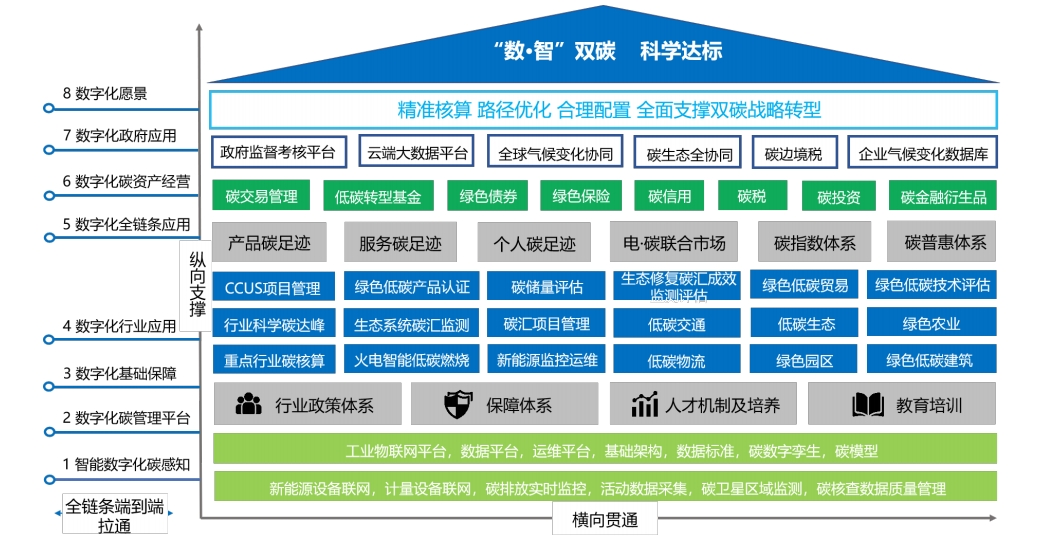
Figure 1: Planning Blueprint for Carbon Peak and Carbon Neutrality Industrial Internet System
Currently, the application of Industrial Internet platforms in China’s “dual carbon” field mainly utilizes digital technology to achieve low-carbon production and reduce pollutant emissions. In equipment management, production process control, and manufacturing process management, energy efficiency is improved through production optimization and control of energy consumption and emissions, optimizing material resources and reducing carbon emissions. For example, the Youye platform performs real-time mapping of energy medium data across all processes, constructing a cross-process collaborative optimization model to achieve overall energy balance with minimal unit hour costs and maximum profits; the Dongfang Guoxin Industrial Internet Cloudiip platform has developed numerous practical apps to assist enterprises in achieving energy conservation and efficiency improvement; the Zhejiang “Dual Carbon Intelligent Governance Platform” has achieved dynamic monitoring of energy consumption, total carbon emissions, energy consumption intensity, and carbon emission intensity across the province, assisting in achieving carbon reduction goals; the Shanghai Pudong Smart Energy Dual Carbon Cloud Platform provides energy carbon monitoring, energy carbon assessment, and energy carbon forecasting functions for government departments, energy enterprises, and energy consumers.With the implementation of China’s carbon peak and carbon neutrality strategy, Industrial Internet platforms will continue to expand their application value and business scenarios based on the green and low-carbon development needs of various industries, entering a new development period guided by environmental friendliness.(3) Existing IssuesOverall, the research on the mechanisms and pathways to achieve carbon peak and carbon neutrality through rapidly developing Industrial Internet technology is still in the preliminary exploration stage.(1) Research and application of Industrial Internet technology in carbon footprint monitoring, carbon sink measurement, and other fields are far from sufficient. An integrated model for carbon emission monitoring has not yet been formed, and monitoring platforms for spatial, ground, and urban carbon are still fragmented digital monitoring platforms, lacking a comprehensive research model that integrates land, air, and space.(2) In the face of the requirements for carbon peak and carbon neutrality goals, traditional carbon emission and carbon absorption measurement and prediction face issues of low accuracy and poor prediction results. On one hand, the carbon emission factor system needs optimization. The factors influencing carbon emissions are complex and diverse, and simply using indicators such as per capita GDP, population size, urbanization rate, technological level, and the proportion of the secondary industry as driving factors for carbon emissions cannot effectively support comprehensive and precise measurement of carbon emissions and carbon absorption. On the other hand, prediction results need further improvement. Due to the long time span and uncertainties such as future policy changes, complex relationships exist between economic activities in different departments and regions, making it difficult to achieve effective predictions of carbon peak and carbon neutrality processes under different periods and scenarios.2. Mechanisms of Industrial Internet in Assisting Precise Carbon Emission Monitoring and “Dual Carbon” Inflection Point Prediction ModelsTo achieve the “dual carbon” goals, it is essential to first understand the carbon baseline, which involves real-time monitoring of carbon emissions to clarify the current carbon emission situation, identifying the gap between the current state and the goals, thereby assessing the differences under various technical conditions and policy scenarios to support the formulation of scientifically feasible carbon reduction plans. In the face of the requirements for carbon peak and carbon neutrality goals, traditional carbon emission and carbon absorption measurement and prediction face issues of low accuracy and poor prediction results. The Industrial Internet, leveraging its advantages in integrated digital technology, can analyze carbon emissions and carbon capture and storage situations across different regions and entities, dynamically tracking changing trends, and performing dynamic monitoring and prediction of CO2 lifecycle changes with broader scope, deeper levels, and higher precision, effectively addressing issues of low accuracy and poor prediction results.(1) “Industrial Internet + ‘Air, Land, and Space Integration'” Technology for Precise Perception of Carbon Emissions and ConcentrationsThe “Air, Land, and Space Integration” technology (Figure 2) utilizes ground observation stations, remote sensing satellites, and aircraft to monitor carbon emissions from key enterprise point sources and CO2 concentrations at specific heights and coordinates within the atmospheric boundary layer (1-2 km above ground) with high precision and broad coverage. The combination of the Industrial Internet with the “Air, Land, and Space Integration” monitoring network enables multi-dimensional data collection and communication transmission of carbon perception devices, and through the model algorithms of the Industrial Internet platform, data analysis and fusion calculations can be performed, ultimately obtaining real-time data measurement expressions of carbon emissions and concentration indicators such as CO2 equivalents.
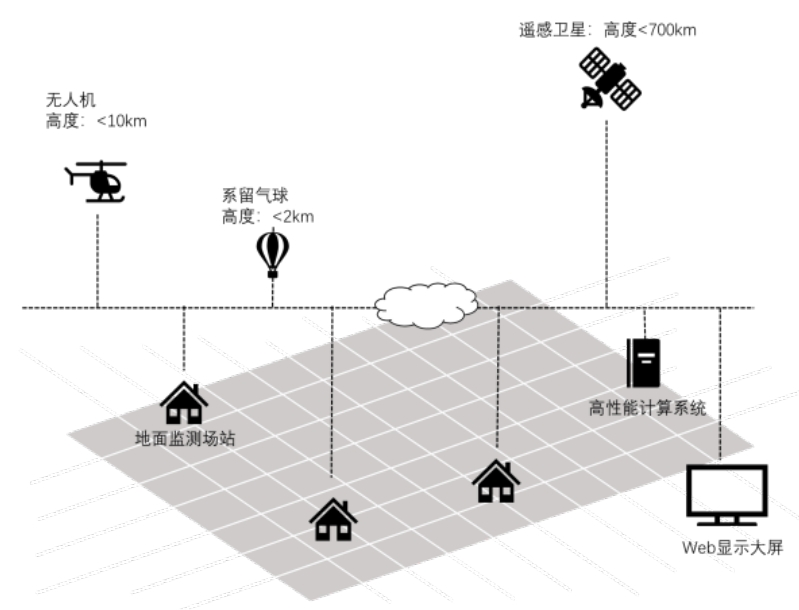
Figure 2: Schematic Diagram of Carbon Emission Monitoring Layout Based on “Air, Land, and Space Integration”
The “Air, Land, and Space Integration Carbon Source and Sink Comprehensive Monitoring and Management Platform” developed by the Chinese Academy of Sciences integrates satellite remote sensing monitoring, airship remote sensing monitoring, drone monitoring, and ground monitoring data, constructing a real-time monitoring network for greenhouse gases and ecological environment above cities at “500 km (satellite) – 20 km (airship) – 100 m (drone)”. It also employs ground detection methods to collect greenhouse gas data from carbon emission sources such as urban industry, energy, buildings, transportation, agriculture, and residents, forming a multi-dimensional, multi-type, and large-scale data foundation for carbon emission and concentration monitoring and measurement.Due to the mobility and diffusion of greenhouse gas concentrations emitted into the atmosphere, based on obtaining real-time data on carbon emissions at different heights, it is necessary to combine multi-source data and data model fusion with pollution gas diffusion models such as the Gaussian plume model. Common fusion models include concentration flow rate measurement methods and multi-source satellite long-term series data fusion production XCO2 methods. Among them, the concentration flow rate measurement method is based on actual measured data from emission sources, calculating and summarizing the relevant carbon emissions. On-site measurements are generally conducted in Continuous Emission Monitoring Systems (CEMS) equipped with carbon emission monitoring modules, directly measuring emissions by continuously monitoring concentration and flow rates. However, for CO2 emissions caused by industrial enterprises in urban and regional areas, high-precision monitoring of major greenhouse gases and meteorological factors is mainly utilized, employing methods such as cavity ring-down spectroscopy, off-axis integrated cavity output spectroscopy, and gas chromatography to monitor CO2 and other greenhouse gas fluxes.The Industrial Internet platform provides technical support for multi-source heterogeneous data and various model fusion calculations, and with the support of cloud computing power, it calculates real-time monitoring results of carbon emissions and concentrations such as CO2 equivalents, providing a technical means for precise carbon measurement.(2) Industrial Internet Assisting in Precise Prediction of Multi-Scenario Carbon Peak and Carbon Neutrality ProcessesWhen assisting in predicting carbon peaks, the Industrial Internet needs to focus on two key points: carbon emission volume and peak time, capturing its essential characteristics of “data + models”. Guided by national emission reduction targets and based on historical carbon emission data and current carbon emission data obtained through digital technology monitoring and accounting, it relies on carbon emission prediction models to predict the carbon emission volume and peak time at which carbon peaks occur, and to identify the main influencing factors of carbon emissions, providing scientific support for formulating actionable and feasible carbon reduction pathways and action plans.Carbon emission monitoring data belongs to time series data. In terms of time series prediction models based on historical and current carbon emission data, the Discrete Second-Order Difference Equation Prediction Method (DDEPM) can be utilized. Analyzing historical data characteristics reveals that China’s carbon emission time series data exhibits overall growth rather than a regular annual increase. The DDEPM method can adapt well to the irregularity of time series, providing significant advantages for predicting unstable growth time series data, thus allowing for relatively accurate predictions of China’s carbon emissions. The DDEPM method is nonlinear, and points that cannot be fitted to linear models can be fitted by the DDEPM prediction curve, making its predicted values highly objective.Research indicates that another key point in predicting carbon emissions is to focus on the selection of influencing factors. When considering the main influencing factors in prediction models, it is essential to understand the current economic development, energy consumption, and energy utilization efficiency across various industries. Most scholars adopt a combined approach of model prediction and economic development scenario analysis, with the models involved primarily including the IPAT model, Stochastic Impacts by Regression on Population, Affluence, and Technology (STIRPAT) model, Logistic model, and Tapio decoupling model. The STIRPAT model, derived from the IPAT model, is a nonlinear analysis model, while the IPAT model is a linear analysis model. The STIRPAT model is currently the most widely used and recognized model for studying carbon emission peak issues, allowing for quantitative research on the relationship between carbon emissions and various influencing factors, offering good flexibility and certain expansion potential. Qu Shunning and others conducted regression analysis on China’s time series data from 1980 to 2008, using the STIRPAT model to predict the future peak time of carbon emissions in China based on previous regression results, yielding the predicted results shown in Table 1.Table 1: Predicted Results of China’s Carbon Emission Peak Based on the STIRPAT Model
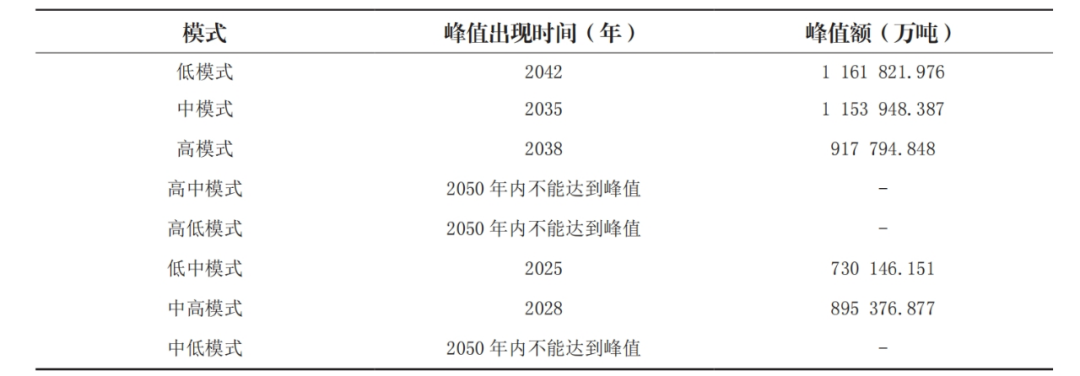
From a modeling perspective, the STIRPAT model can be applied to scenario-based result prediction analysis. When combining model predictions with economic development scenario goals, it is necessary to consider the reasonable division of high, medium, and low economic development scenarios. Currently, the most authoritative predictions in China are the three emission scenarios forecasted by the Energy Research Institute of the National Development and Reform Commission, namely the baseline scenario, low-carbon scenario, and enhanced low-carbon scenario. The low-carbon scenario prediction values can serve as the lower limit of the best possible range for carbon emissions; the enhanced low-carbon scenario can serve as the minimum prediction scenario for future carbon emissions.Utilizing the DDEPM method and the STIRPAT model comprehensively, along with influencing factors to predict the carbon emission volume and peak time, the framework idea (Figure 4) is as follows: based on historical data, current monitoring data, and discrete second-order difference equation time series predictions, regression is performed using the STIRPAT model while considering selected carbon emission influencing factors to predict the future peak and peak time of carbon emissions in China. The selected carbon emission influencing factors can be deduced from the overall situation of industrial economy, with specific data calculated from core indices such as macro industrial economic indices, key process CNC rate, digital R&D tool penetration rate, and energy consumption per unit in manufacturing.
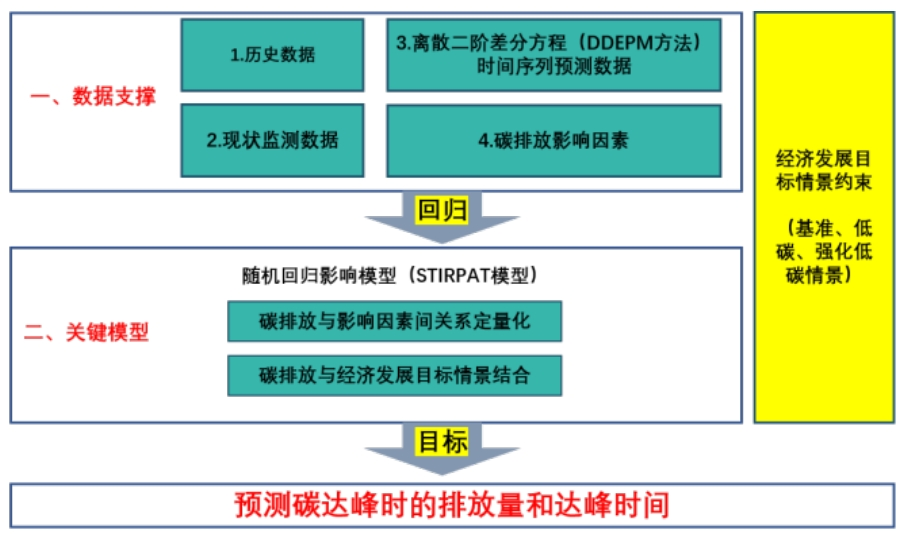
Figure 4: Prediction Framework for Multi-Scenario Carbon Peak and Carbon Neutrality Processes
3. Pathways for the Industrial Internet to Assist Industries in Achieving “Dual Carbon” GoalsThe Industrial Internet, with its characteristics of integration with industries, can deeply integrate digital technology with green and low-carbon technology, thereby assisting enterprises, regions, and even society as a whole in understanding their carbon “baseline”, planning carbon pathways, and improving comprehensive energy operation efficiency, promoting energy conservation and emission reduction from the source to the process to the overall system.(1) Industrial Internet Assisting in Cleaner and More Efficient Energy SupplyCurrently, China is accelerating the construction of a clean, low-carbon, safe, and efficient modern energy system. The digital and intelligent upgrade of the energy industry is an important way to enhance the modernization level of the energy industry chain and construct a new stage of the modern energy system. The National Development and Reform Commission and the National Energy Administration have issued the “14th Five-Year Plan for Modern Energy System Construction”, proposing to promote green and low-carbon transformation in energy production and consumption. During the “14th Five-Year Plan” period, the focus is on increasing the capacity for clean energy supply (“addition”) and reducing carbon emissions in the energy industry chain (“subtraction”), promoting the formation of a green and low-carbon energy consumption model. As an important cornerstone of the Fourth Industrial Revolution, the Industrial Internet will play a significant role in addressing the intermittency of non-fossil energy, predicting renewable energy output, and supporting the proactive operation of renewable energy in the grid, supporting the evolution of China’s energy system towards cleaner, more efficient, and smarter directions.1. Industrial Internet Assisting in the Clean Utilization of Fossil Fuels such as CoalIn the coal mining and washing process, fuel combustion, electricity, and heat supply are the main sources of CO2 emissions. The coal industry can leverage the Industrial Internet throughout the entire process of coal mining, washing, and utilization to achieve intelligent production system improvements, enhance overall production system efficiency, and achieve energy conservation, pollution reduction, and carbon reduction throughout the entire process. For example, in clean coal utilization, the Industrial Internet can provide precise monitoring of coal blending, supervision of clean conversion processes, optimization of supercritical circulating fluidized bed boiler flow patterns, and coupling with renewable energy utilization; it can utilize digital technology to construct quality control pre-emptive application scenarios and intelligent management systems, creating a lean decision-making platform to optimize energy consumption parameters such as steam, circulating water, gasification furnace, and methanol synthesis carbon-hydrogen ratio, thereby reducing carbon emissions during the clean utilization process. For instance, the wide-area Mingdao digital intelligent coal blending solution based on the Industrial Internet platform has helped the Baikuang Group in Baise City, Guangxi, achieve a 10% reduction in coal consumption, with annual benefits exceeding 25 million yuan.
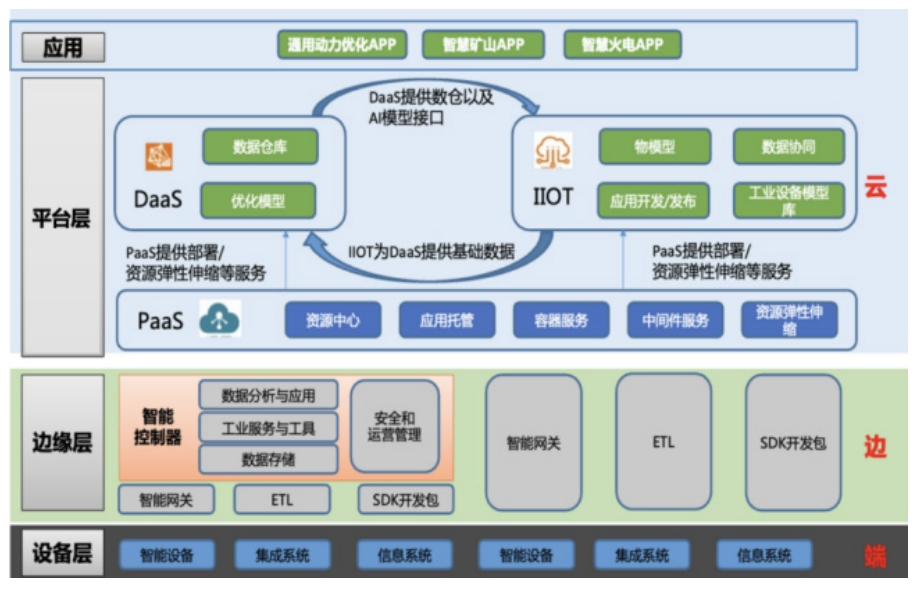
Figure 5: Digital Intelligent Coal Blending Solution2. Industrial Internet Assisting in Building a New Power SystemIn constructing a new power system, the Industrial Internet assists in creating a flexible scheduling mechanism on the power supply side, enabling precise identification of grid-side loads and trend predictions, facilitating multi-energy complementary scheduling operations on the power supply side, and creating a resilient and flexible energy scheduling mechanism, empowering the power supply side with digital technology to reduce operational costs and improve energy conversion efficiency.The Haining Wind-Solar-Storage-Charging + Combined Heat and Power Microgrid Project has integrated intelligent photovoltaic, energy storage, and charging systems in the Haining Zhengtai Industrial Park, designing a comprehensive energy management platform for multi-energy complementarity, achieving real-time status monitoring, economic operation optimization, unattended operation and maintenance, and scheduling management control of the grid, new energy, energy storage, and distribution systems, ensuring stable, efficient, green, and economical operation of the system (Figure 6). In terms of energy utilization efficiency, it avoids the instability issues caused by the volatility and randomness of clean energy generation, achieving efficient and high-quality utilization of renewable energy within the grid, potentially reducing energy costs in the park by 10%.
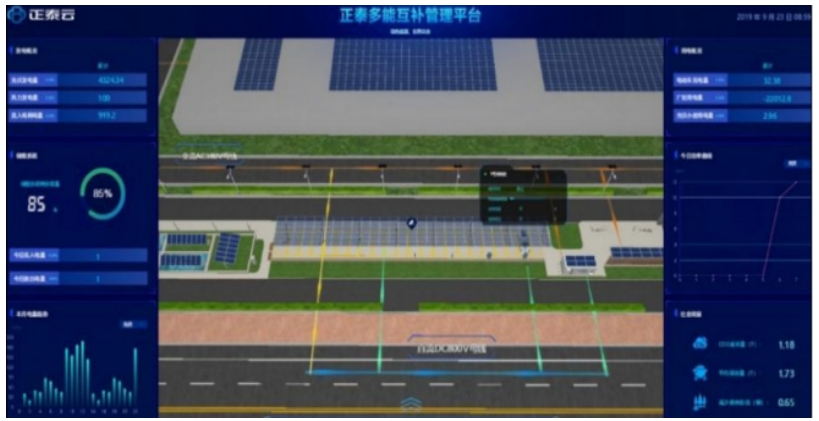
Figure 6: Zhengtai Multi-Energy Complementarity Management Platform(2) Industrial Internet Assisting in Greener and More Energy-Efficient Industrial SectorsAccording to data from CCID, industry is a significant sector for carbon emissions, accounting for about 70% of total carbon emissions. In recent years, China’s industrial green development has achieved remarkable results. Data shows that from 2012 to 2022, the energy consumption per unit of added value in large-scale industries in China has decreased by over 36%, achieving a win-win situation for economic and environmental benefits. Actively promoting green and low-carbon industrial development plays an important role in achieving carbon peak and carbon neutrality goals.The Industrial Internet, by constructing a clean, low-carbon, safe, and efficient modern energy system, assists in upgrading and optimizing the supply chain and industrial structure, promoting green innovation and transformation in production and lifestyle, and reducing the overall energy consumption intensity of society. The Industrial Internet promotes the unification and aggregation of production data and carbon emission data, achieving deep integration of new generation information technology and carbon reduction technology, accelerating the implementation of enabling models, and providing references for green production. The combination of Industrial Internet technology with industrial mechanisms helps establish optimal energy efficiency models and evaluation indicators, achieving refined energy management and ultimately reaching energy conservation and carbon reduction effects, that is: first “pressing the accelerator” from the source, and then “counting the pennies” in the details, thus achieving overall decarbonization. Under the empowerment of the Industrial Internet, enterprise productivity, work efficiency, and energy utilization efficiency are improved, effectively reducing energy use and carbon emissions, achieving energy conservation and efficiency enhancement.Taking the building materials industry as an example, the Industrial Internet, combined with the unique knowledge, experience, and needs of the building materials industry, accelerates the aggregation and sedimentation of industrial mechanism models, achieving real-time online monitoring of carbon emissions, enhancing the comprehensive utilization efficiency of energy resources through data collection and analysis, kiln optimization control, and promoting the cleaning and low-carbon transformation of the entire production process. Conch Cement, relying on the “5G + Industrial Internet” smart cement complex (Figure 7), has saved 400 million kWh of electricity, reduced CO2 emissions by 747,700 tons, reduced pollutants by 30,000 tons, and achieved a denitrification efficiency of 90%, while also reducing employee labor intensity by 21%.
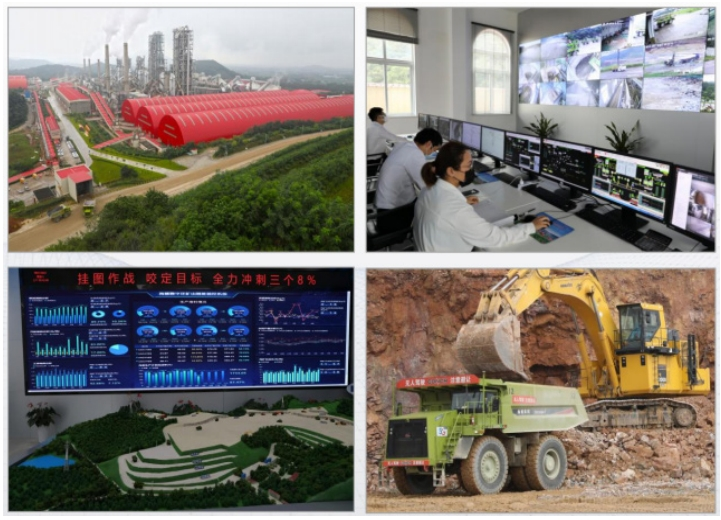
Figure 7: Example of Conch’s “5G + Industrial Internet” Smart Cement Complex(3) Industrial Internet Assisting in Optimizing Industrial Structure for Low-Carbon DevelopmentIndustrial structure upgrading is an inherent driving force for China’s high-quality economic development and an important way to promote carbon reduction and achieve carbon peak. Its essence is to promote the gradual dominance of relatively advanced industries in the industrial system by improving output efficiency and promoting reasonable industrial structure settings, with a direction towards high technology and high intensity.From a macro perspective, the digital industrial organization form centered on the Industrial Internet platform aggregates massive industrial data and conducts analysis, promoting the rational allocation of production factors and carbon emission quotas among different industries, thereby maximizing utilization efficiency, reducing resource consumption while using market mechanisms to enhance the enthusiasm for carbon reduction across society, assisting in achieving the “dual carbon” goals. From a micro perspective, Industrial Internet-related technologies promote the transformation and upgrading of enterprise production processes and low-carbon technology development, helping enterprises improve production efficiency and reduce carbon emissions, thereby driving the industrial structure towards low-carbon transformation and upgrading.4. Countermeasures and Suggestions for the Industrial Internet to Promote Carbon Peak and Carbon NeutralityCurrently, the integrated development of “Industrial Internet + Dual Carbon” has achieved certain results, but still faces a series of challenges. First, specific implementation plans for “Industrial Internet + Dual Carbon” in specific industries are still lacking; second, there is significant potential for enterprises to save energy and reduce consumption, but digital capabilities are insufficient; third, the implementation and popularization of the Industrial Internet still face challenges such as technical complexity and high costs; fourth, the degree of deep integration and application with high energy consumption sectors in various industries is still insufficient; fifth, the relevant standard system still needs further improvement.To better leverage the technical support and industrial cultivation role of the Industrial Internet in promoting carbon peak and carbon neutrality, the state and industries should promote the Industrial Internet as a new driving force for the green and low-carbon transformation of industries from five aspects: improving policy guidance, solidifying data foundations, accelerating digital transformation, increasing industrial cultivation, and enhancing talent support.(1) Improving Policy Guidance: First, relevant industries should continuously formulate implementation plans for utilizing the Industrial Internet to promote carbon peak and carbon neutrality, guiding enterprises in various industries to implement policies based on their specific circumstances. Second, improve fiscal and tax policies to encourage governments at all levels to increase support for the development of the “Industrial Internet + Green Low Carbon” industry and technology research and development. Third, actively develop green finance and improve the green finance standard system. Fourth, encourage social capital to establish green low-carbon industry investment funds. Fifth, stimulate energy-saving requirements through market mechanisms.(2) Solidifying Dual Carbon Data Foundations: First, accelerate the construction of new infrastructure for “Industrial Internet + Green Low Carbon”. Second, accelerate the establishment of energy management systems and standard measurement systems in key industries, improve carbon emission accounting standards, and establish and improve carbon emission data management systems and relevant laws and regulations in key industries. Third, promote the transmission of carbon emission data through supply chains. Fourth, encourage industry-university-research cooperation to develop more numerous and higher-quality carbon monitoring and carbon reduction big data tools.(3) Accelerating Digital Transformation: First, promote technological transformation and optimization configuration in traditional industries. Second, emphasize the use of the Industrial Internet in key energy consumption sectors in traditional energy use areas to reduce carbon emissions during production processes. Third, strengthen the collection, aggregation, and analysis capabilities of energy and energy consumption data to effectively serve the improvement of energy consumption monitoring and energy management levels. Fourth, promote digital technology to empower the green transformation of small and medium-sized enterprises.(4) Increasing Industrial Cultivation Efforts: First, continuously encourage telecommunications companies, information service companies, and industrial enterprises to strengthen cooperation, coordinating and sharing low-carbon information foundational data and industrial big data resources. Second, focus on typical scenarios such as energy management and energy-saving carbon reduction, cultivating and promoting standardized “Industrial Internet + Green Low Carbon” solutions and industrial apps to assist the green transformation of industries and regions. Third, deepen the integration of small and medium-sized enterprises with “Industrial Internet + Green Low Carbon” applications.(5) Enhancing Talent Support: First, vigorously promote interdisciplinary construction. Encourage relevant universities to actively offer courses related to “Industrial Internet + Energy Consumption Reduction” and “Industrial Internet + Environmental Engineering” in conjunction with digital carbon reduction technology and service needs. Second, deepen the integration of industry and education in the Industrial Internet, establishing public training bases for the Industrial Internet and high-skill talent cultivation bases to nurture more innovative practical talents. Third, universities should participate in the construction of internal training institutions in various forms, forming a cultivation mechanism that integrates industry, academia, and research, encouraging frontline digital carbon emission management personnel and technical experts to conduct training in universities, promoting the connection between industrial chain development and talent cultivation.5. ConclusionThis study systematically investigates the mechanisms and pathways of the Industrial Internet in promoting the realization of “dual carbon” goals, outlining relevant typical practical cases, and proposing the main pathways for the Industrial Internet to promote the low-carbon green transformation of industries, namely: the Industrial Internet assists in optimizing energy structure, providing clean, safe, and efficient energy supply; assisting in greener and more energy-efficient industrial sectors; and assisting in optimizing industrial structure for low-carbon development. Furthermore, strategies and suggestions for achieving the “dual carbon” goals through the Industrial Internet are proposed from five aspects: improving policy guidance, solidifying data foundations, accelerating digital transformation, increasing industrial cultivation, and enhancing talent support, laying a theoretical foundation for the role of digital technology in promoting the green and low-carbon transformation of industries.Funding Project:Independent research project of the China Industrial Internet Research Institute (KFZY2022020)
Author Profiles
Shang Duo, Deputy Director of the Integrated Development Department of the China Industrial Internet Research Institute (acting), Senior Engineer, Senior Researcher in Industrial Internet Industry Solutions, PhD, research direction: integrated development of Industrial Internet with key industries such as energy, petrochemicals, oil and gas pipelines, and civil explosives;Lu Chunyu, China Industrial Internet Research Institute, Master’s degree, Senior Engineer, research direction: Industrial Internet, digital consulting, petroleum and natural gas storage and transportation engineering;Hui Xin (corresponding author), China Industrial Internet Research Institute, Senior Engineer, PhD, research direction: Industrial Internet, industry digital transformation, etc., email: [email protected];Wang Lei, Researcher at the China Industrial Internet Research Institute, PhD in Science, Engineer, research direction: energy industrial Internet, big data in electricity, digital transformation of the energy industry, and other technical fields;Chen Dongliang, China Industrial Internet Research Institute, Master’s degree in engineering, research direction: technologies related to the Industrial Internet;
Geng Jietan, China Industrial Internet Research Institute, Master’s degree, Economist, research direction: energy economics, green energy.
(Source: New Industrialization)